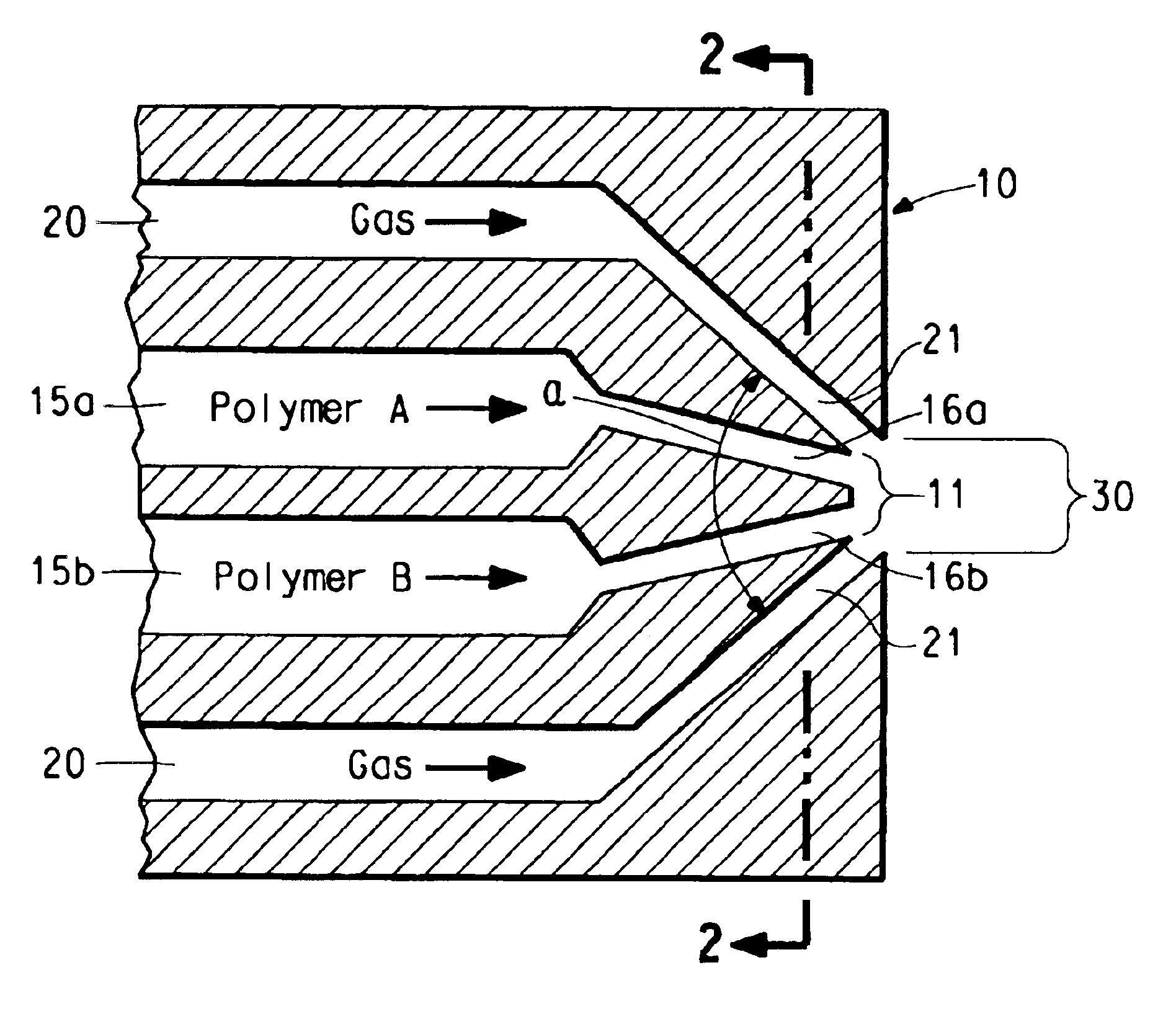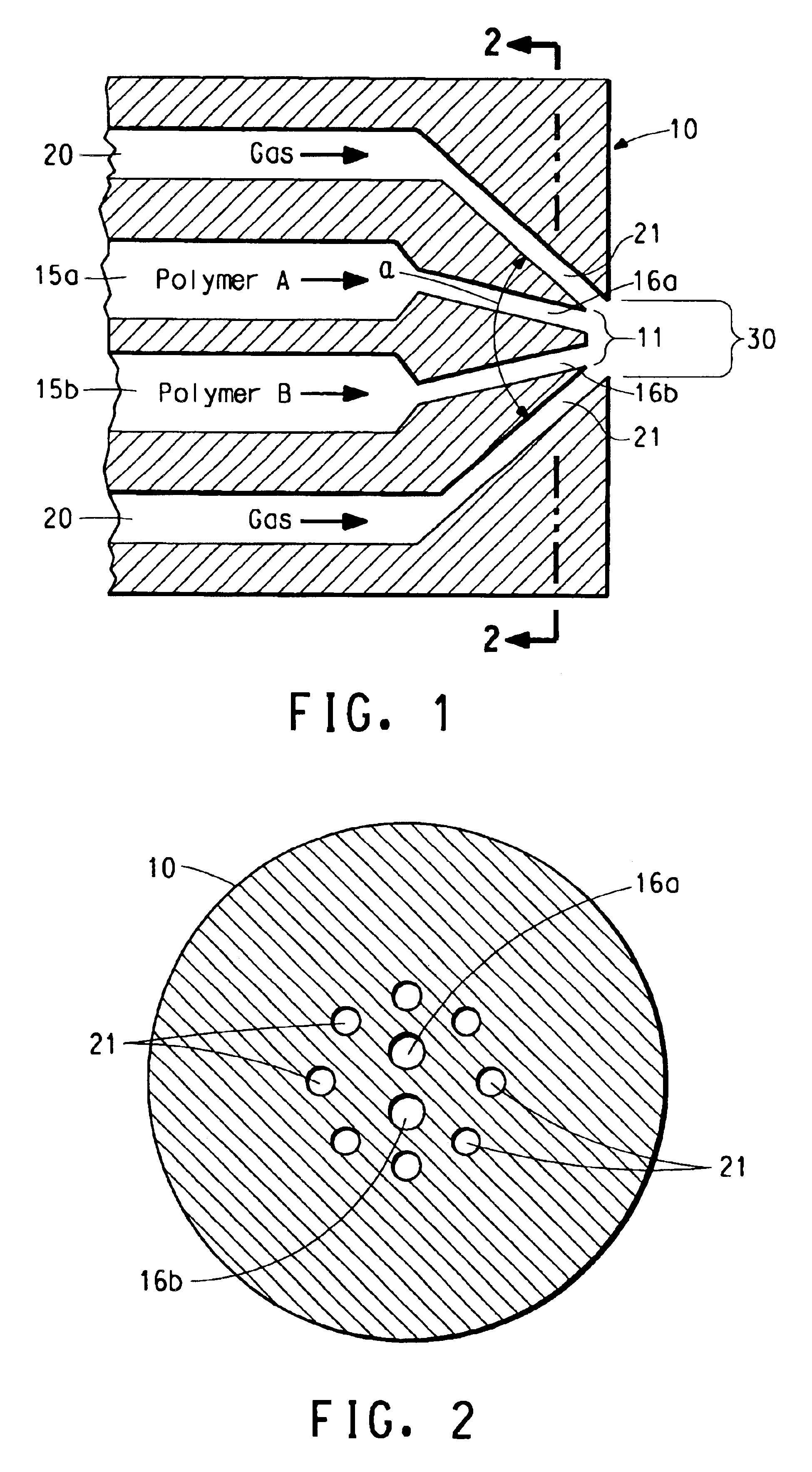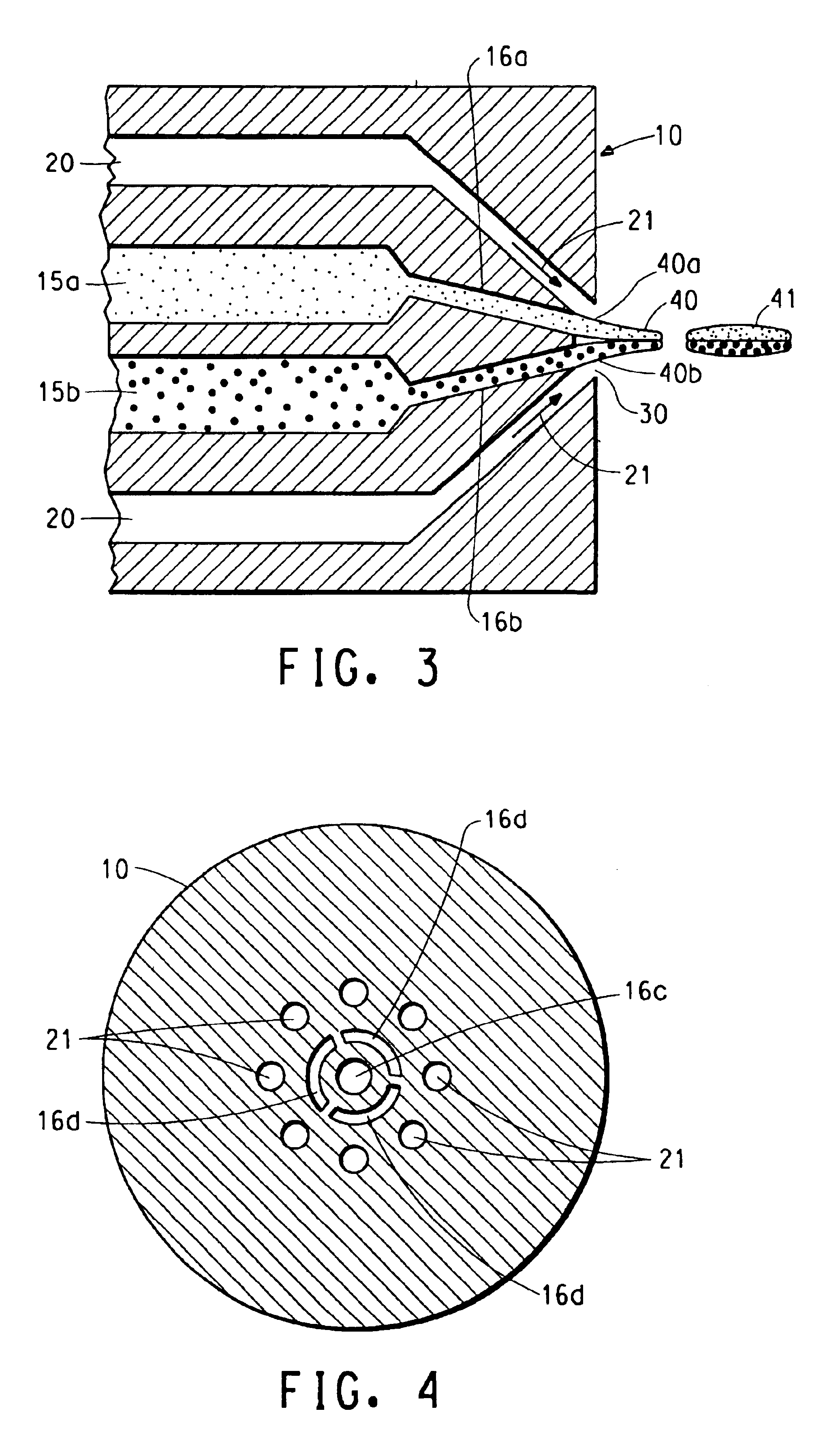Apparatus for making multicomponent meltblown fibers and webs
a technology apparatus, which is applied in the field of multi-component meltblown fiber, multi-component meltblown fiber web, composite non-woven fabrics, etc., and can solve problems such as significant limitations in the method
- Summary
- Abstract
- Description
- Claims
- Application Information
AI Technical Summary
Benefits of technology
Problems solved by technology
Method used
Image
Examples
examples
[0045]Composite sheets comprising an inner layer of meltblown fibers sandwiched between spunbond outer layers were prepared in Examples 1-4. The same spunbond outer layers were used in each of these examples and comprised bicomponent filaments with a sheath-core cross section.
[0046]The spunbond layers were made from bicomponent fibers of linear low density polyethylene (LLDPE) with a melt index of 27 g / 10 minutes (measured according to ASTM D-1238 at a temperature of 190° C.) which was a blend of 20 weight percent ASPUN 6811A LLDPE and 80 weight percent ASPUN 61800-34 LLDPE (both available from Dow), and poly(ethylene terephthalate) (PET) having an intrinsic viscosity of 0.53 dl / g available from DuPont as Crystar® 4449 polyester. The polyester resin was crystallized at a temperature of 180° C. and dried at a temperature of 120° C. to a moisture content of less than 50 ppm before use. The polyester was heated to 290° C. and the polyethylene was heated to 280° C. in separate extruders...
examples 1-4
[0048]The meltblown bicomponent webs in these examples were made using a post-coalescence meltblowing process. Bicomponent fibers were prepared in a side-by-side arrangement with Crystar® poly(ethylene terephthalate) available from DuPont having an intrinsic viscosity of 0.53 and a moisture content of about 1500 ppm, and linear low density polyethylene (LLDPE) with a melt index of 100 g / 10 minutes (measured according to ASTM D-1238) available from Dow as ASPUN 6806. The polyethylene polymer was heated to 450° F. (232° C.) and the polyester polymer was heated to 572° F. (300° C.) in separate extruders. The two polymers were separately extruded, filtered and metered to a bicomponent spin block having the die tip configuration shown in FIG. 6. The die was formed from two vertical-etched plates 60 and 60′ having parallel grooves 62a and 62b formed therein, the grooves having a radius of 0.2 mm. The two plates were separated by a 2 mil thick solid plate 64 in order to keep the two polyme...
example 5
[0049]A meltblown bicomponent web was made with a linear low density polyethylene (LLDPE) component having a melt index of 135 g / 10 minutes (measured according to ASTM D-1238) available from Equistar as GA594 and a poly(ethylene terephthalate) component having a reported intrinsic viscosity of 0.53 available from DuPont as Crystar® polyester (Merge 4449). The LLDPE and poly(ethylene terephthalate) polymers were heated in separate extruders to temperatures of 260° C. and 305° C., respectively. The two polymers were separately extruded and metered to two independent polymer distributors. The planar melt streams exiting each distributor were filtered independently and extruded through a bicomponent meltblown die having two linear sets of independent holes, a first set for extruding the LLDPE and a second set for extruding the poly(ethylene terephthalate). The holes were arranged in pairs such that each LLDPE spin orifice was located in close proximity to a poly(ethylene terephthalate) ...
PUM
| Property | Measurement | Unit |
|---|---|---|
| diameter | aaaaa | aaaaa |
| diameter | aaaaa | aaaaa |
| average diameter | aaaaa | aaaaa |
Abstract
Description
Claims
Application Information
 Login to View More
Login to View More - R&D
- Intellectual Property
- Life Sciences
- Materials
- Tech Scout
- Unparalleled Data Quality
- Higher Quality Content
- 60% Fewer Hallucinations
Browse by: Latest US Patents, China's latest patents, Technical Efficacy Thesaurus, Application Domain, Technology Topic, Popular Technical Reports.
© 2025 PatSnap. All rights reserved.Legal|Privacy policy|Modern Slavery Act Transparency Statement|Sitemap|About US| Contact US: help@patsnap.com



